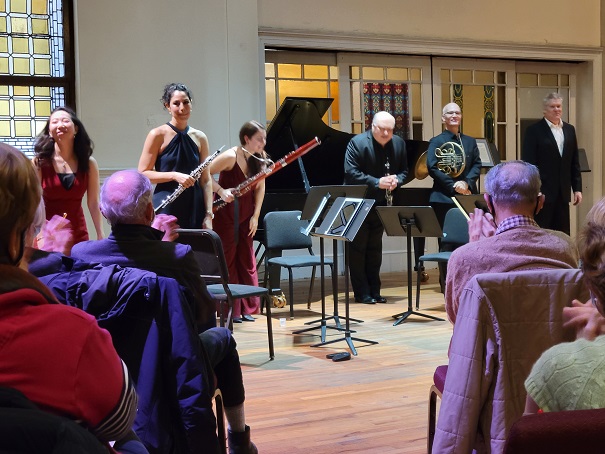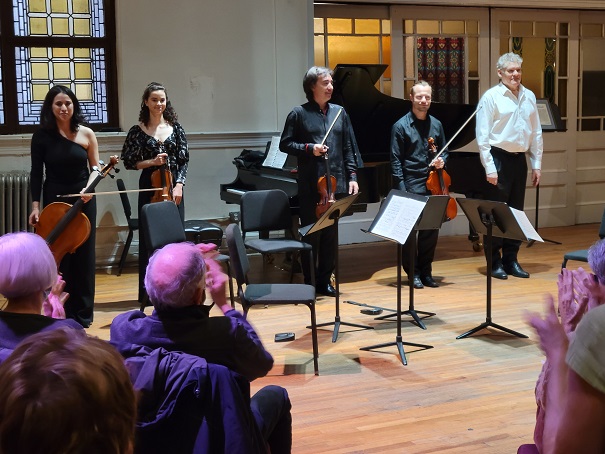Concert Diary: “A Russian Spectrum” with the Jupiter Players
November 29, 2021
New York, N.Y.
Modest Mussorgsky’s Pictures at an Exhibition was famously inspired by a posthumous exhibition of the art of Victor Harmann, who died of an aneurysm in 1873 at age 39. The recurring Promenade section portrays Mussorgsky himself wandering through the exhibit of his friend’s art, while the other movements imaginatively depict particular paintings, some of which are lost.
I love Mussorgsky’s original piano version, and if baffles me why so many people have decided that the piano is not adequate for the task of rendering this music. The Wikipedia entry on Pictures at an Exhibition lists some 25 orchestral arrangements, 2 for concert band, and over 35 for other ensembles, including a synthesizer version by Tomita and for rock band by Emerson, Lake, and Palmer.
Not listed however, is the version of Pictures at an Exhibition for wind quintet by Joachim Linckelmann, which was performed by the Jupiter Players on November 22 in a program entitled “Russian Spectrum.” Although I still prefer the original piano version, the ensemble of flute, oboe, clarinet, bassoon, and horn revealed a more contemplative view of the score. The flutes were able to suggest birds, of course, but I didn’t hear much of an improvement otherwise. I missed the ringing tones of the piano for the final “Great Gate of Kiev,” which was surprisingly not provided by a cameo appearance of a pianist rights at the end.
Here’s the quintet and pianist during curtain calls:
The concert began with another arrangement: Lensky’s poignant lament before the 2nd-act finale duel, from Tchaikovsky’s opera Eugene Onegin arranged for violin and piano.
The concert concluded with a massive work that weighs about 500 pounds: Sergey Taneyev’s Piano Quintet in G minor, Op. 30 from 1911. Programmist Michael Volpert described Taneyev as a “most underappreciated” composer, and the work was indeed quite compelling. The adagio opening and tragic allegro had a complex contrapuntal density and an unrelenting driving intensity. (I can see why Taneyev is sometimes called “the Russian Brahms.") I loved the extensive ricochet playing in the Scherzo, and the sweetly sentimental Trio section. The third-movement Largo started off ponderously, but became gently lyrical, building to ominous peaks with a lovely quiet finish. The Finale resembled the first movement in density and complexity, leading to a triumphant ending drenched in romantic pathos, and the audience response during curtain calls was well deserved:

